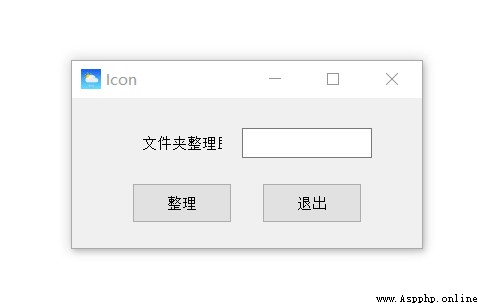經常雜亂無章的文件夾會讓我們找不到所想要的文件,因此特意制作了一個可視化GUI界面,通過輸入路徑一鍵點擊實現文件分門別類的歸檔。
我們先羅列一下大致有幾類文件,根據文件的後綴來設定,大致如下
SUBDIR = {
"DOCUMENTS": [".pdf", ".docx", ".txt", ".html"],
"AUDIO": [".m4a", ".m4b", ".mp3", ".mp4"],
"IMAGES": [".jpg", ".jpeg", ".png", ".gif"],
"DataFile": [".csv", ".xlsx"]
}上面所羅列出來的文件後綴並不全面,讀者可以根據自己的需求往裡面添加,可以根據自己的喜好來進行分文別類,然後我們自定義一個函數,根據輸入的一個文件後綴來判斷它是屬於哪個類的
def pickDir(value):
for category, ekstensi in SUBDIR.items():
for suffix in ekstensi:
if suffix == value:
return category例如輸入的是.pdf返回的則是DOCUMENTS這個類。我們還需要再自定義一個函數,遍歷當前目錄下的所有文件,獲取眾多文件的後綴,將這些不同後綴的文件分別移入不同類別的文件夾,代碼如下
def organizeDir(path_val):
for item in os.scandir(path_val):
if item.is_dir():
continue
filePath = Path(item)
file_suffix = filePath.suffix.lower()
directory = pickDir(file_suffix)
directoryPath = Path(directory)
# 新建文件夾,要是該文件夾不存在的話
if directoryPath.is_dir() != True:
directoryPath.mkdir()
filePath.rename(directoryPath.joinpath(filePath))output

我們再次基礎之上,再封裝一下做成Python的可視化GUI界面,代碼如下
class FileOrgnizer(QWidget):
def __init__(self):
super().__init__()
self.lb = QLabel(self)
self.lb.setGeometry(70, 25, 80, 40)
self.lb.setText('文件夾整理助手:')
self.textbox = QLineEdit(self)
self.textbox.setGeometry(170, 30, 130, 30)
self.findButton = QPushButton('整理', self)
self.findButton.setGeometry(60, 85, 100, 40)
self.quitButton = QPushButton('退出', self)
self.quitButton.clicked.connect(self.closeEvent)
self.findButton.clicked.connect(self.organizeDir)
self.quitButton.setGeometry(190, 85, 100, 40)
self.setGeometry(500, 500, 350, 150)
self.setWindowTitle('Icon')
self.setWindowIcon(QIcon('../751.png'))
self.show()
def pickDir(self, value):
for category, ekstensi in SUBDIR.items():
for suffix in ekstensi:
if suffix == value:
return category
def organizeDir(self, event):
path_val = self.textbox.text()
print("路徑為: " + path_val)
for item in os.scandir(path_val):
if item.is_dir():
continue
filePath = Path(item)
fileType = filePath.suffix.lower()
directory = self.pickDir(fileType)
if directory == None:
continue
directoryPath = Path(directory)
if directoryPath.is_dir() != True:
directoryPath.mkdir()
filePath.rename(directoryPath.joinpath(filePath))
reply = QMessageBox.information(self, "完成", "任務完成,請問是否要退出?", QMessageBox.Yes | QMessageBox.No, QMessageBox.No)
if reply == QMessageBox.Yes:
event.accept()
else:
event.ignore()
def closeEvent(self, event):
reply = QMessageBox.question(self, '退出',
"確定退出?", QMessageBox.Yes |
QMessageBox.No, QMessageBox.No)
if reply == QMessageBox.Yes:
event.accept()
else:
event.ignore()效果如下圖所示

最後我們通過pyinstaller模塊來將Python代碼打包成可執行文件,操作指令如下
pyinstaller -F -w 文件名.py部分參數含義如下:
-F:表示生成單個可執行文件
-w:表示去掉控制台窗口,這在GUI界面時時非常有用的
-i:表示可執行文件的圖標
推薦閱讀
5行Python代碼爬取3000+ 上市公司的信息
Python 辦公自動化:全網最強最詳細 PDF 文件操作手冊!
50行Python代碼爬取黑絲美眉高清圖